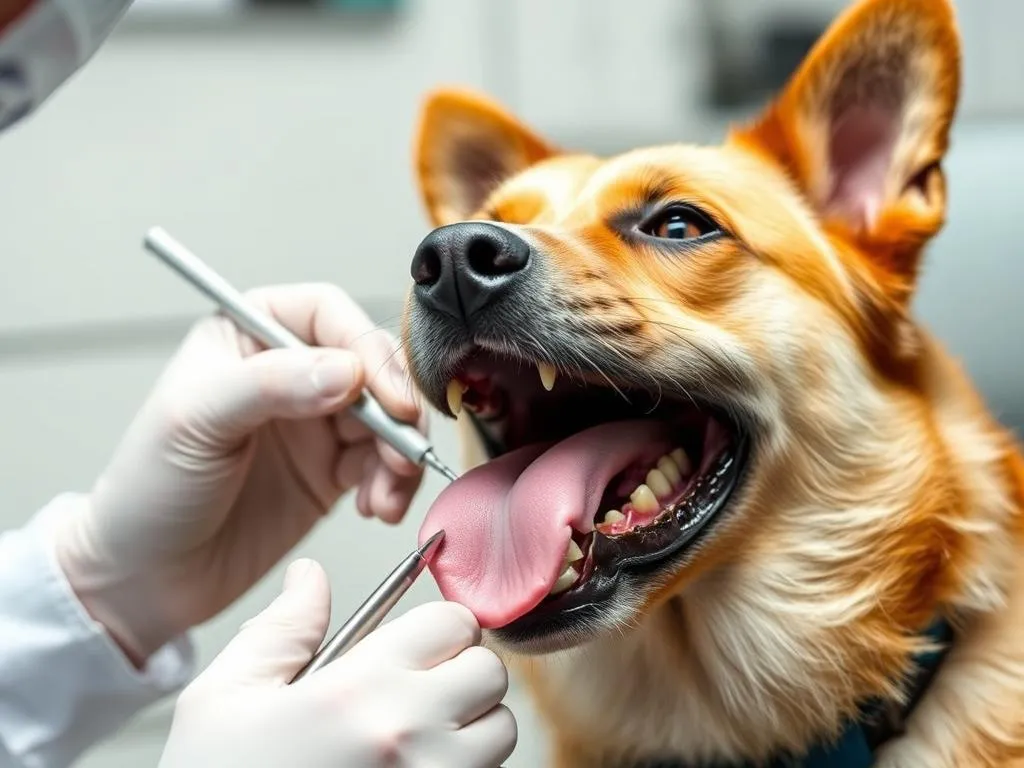
Introduction
Dental health is an integral part of overall health for dogs, yet it is often overlooked by pet owners. Just like humans, dogs can suffer from various dental issues, including periodontal disease and tooth decay, which can lead to pain, infection, and other serious health problems. Among the treatment options available, tooth extraction is sometimes necessary to alleviate discomfort and prevent further complications. This brings us to a crucial question that many dog owners face: how much does dog tooth extraction cost?
Understanding Dog Dental Health
Importance of Dental Care
The mouth is a gateway to a dog’s overall health. Poor dental hygiene can lead to a host of medical issues, including heart disease, kidney problems, and infections that can spread throughout the body. Regular dental care is essential not only for maintaining fresh breath but also for ensuring that your dog remains healthy in the long run.
Signs of Dental Problems in Dogs
Recognizing the signs of dental issues early can make a significant difference in treatment outcomes. Common indicators that your dog may have dental problems include:
- Bad breath: An unpleasant odor can be a sign of periodontal disease or infection.
- Difficulty eating: If your dog hesitates or refuses to chew their food, it may be due to dental pain.
- Swollen gums or bleeding: Healthy gums should be pink and firm; any swelling or bleeding indicates an issue.
- Excessive drooling: Increased salivation can be a sign of discomfort or dental disease.
Common Reasons for Tooth Extraction
Periodontal Disease
Periodontal disease is the most common dental issue in dogs and can progress through several stages. It begins with gingivitis (inflammation of the gums) and can advance to more severe forms, leading to tooth loss. As the disease progresses, the supporting structures of the teeth weaken, making extraction necessary to alleviate pain and prevent further infection.
Tooth Fractures
Tooth fractures can occur due to various reasons, including rough play, chewing hard objects, or trauma. Depending on the severity of the fracture, extraction may be the best option, especially if the tooth is severely damaged or has exposed nerves, leading to pain and infection.
Oral Tumors
Oral tumors can affect dogs of all ages and can be benign or malignant. Common types of tumors that may require extraction include epulides and squamous cell carcinoma. If a tumor is affecting a tooth, extraction may be necessary as part of a larger treatment plan.
The Tooth Extraction Process
Pre-Extraction Assessment
Before any extraction, a thorough veterinary examination is crucial. Your veterinarian will assess your dog’s dental health through a dental cleaning and diagnostic tests, such as X-rays, to determine the extent of the problem and formulate a treatment plan.
The Extraction Procedure
During the extraction, your dog will be placed under anesthesia to ensure they remain pain-free and calm. The procedure typically involves the following steps:
- Anesthesia administration: Your dog will receive a sedative followed by anesthesia.
- Tooth removal: The veterinarian will carefully extract the affected tooth or teeth, ensuring minimal trauma to surrounding tissues.
- Post-operative care: After the extraction, your dog will be monitored as they wake up from anesthesia.
Post-Extraction Care
Following the extraction, your veterinarian will provide guidance on pain management and medications. It is essential to follow these instructions closely to ensure a smooth recovery. Additionally, dietary recommendations may include soft food to avoid irritating the extraction site.
Factors Influencing the Cost of Dog Tooth Extraction
Understanding how much does dog tooth extraction cost involves examining several factors that can influence pricing.
Geographic Location
Veterinary costs can vary significantly based on geographic location. In urban areas, prices may be higher due to the cost of living and demand for services. Conversely, rural areas may offer more affordable options.
Type of Procedure
The cost can also differ depending on whether the extraction is simple or surgical. A simple extraction involves removing teeth that are easily accessible, while surgical extractions may involve more complex procedures, including lifting gums and removing bone.
Additional Services
Costs for consultations, X-rays, pre-operative blood tests, and follow-up visits can add to the overall expense. Ensure you inquire about these potential costs when discussing your dog’s dental health with your veterinarian.
Size and Breed of Dog
The size and breed of your dog can also affect the cost of tooth extraction. Larger breeds may require more anesthesia and have a higher risk of complications, potentially increasing costs.
Average Cost of Dog Tooth Extraction
Breakdown of Costs
On average, dog tooth extraction can range from $300 to $1,500. Here’s a breakdown of typical costs:
- Simple extraction: $300 – $800
- Surgical extraction: $800 – $1,500
- X-rays: $50 – $150
- Consultation fees: $50 – $100
It’s essential to compare costs between different veterinary clinics and emergency services, as prices can vary widely.
Insurance and Payment Options
Many pet insurance policies cover dental procedures, including tooth extractions. It’s advisable to check your policy details or inquire about coverage options before the procedure. Additionally, some veterinary clinics offer payment plans or financing options to help manage costs.
Preventive Measures to Reduce Dental Issues
Regular Dental Check-ups
Routine veterinary visits are crucial for maintaining your dog’s dental health. Regular check-ups can catch potential issues early, preventing the need for more invasive procedures like extractions.
Home Dental Care
Establishing a home dental care routine can significantly reduce dental issues. Consider the following tips:
- Brushing: Use a toothbrush and toothpaste designed for dogs. Aim to brush your dog’s teeth at least a few times a week.
- Dental products: There are various dental chews, water additives, and gels that can help maintain oral health.
- Dental treats and toys: Look for products specifically designed to promote dental hygiene, helping to reduce plaque and tartar buildup.
Professional Dental Cleanings
Having your dog’s teeth professionally cleaned at least once a year can help prevent periodontal disease and other dental problems. Your veterinarian can recommend the appropriate frequency based on your dog’s specific needs.
Conclusion
Dental health care is vital for the overall well-being of your dog. By understanding the costs and processes associated with tooth extractions, you can make informed decisions about your pet’s dental care. Early intervention, regular check-ups, and good home care practices can help prevent dental issues, ultimately saving you time, stress, and money in the long run.
FAQs
What are the risks of not addressing dental issues in dogs?
Neglecting dental issues can lead to serious health complications, including systemic infections, pain, and even tooth loss. Chronic dental disease can also contribute to organ damage over time.
How can I tell if my dog needs a tooth extraction?
Signs that your dog may need a tooth extraction include persistent bad breath, difficulty eating, swollen or bleeding gums, and visible tooth damage. A veterinary examination is necessary for a definitive diagnosis.
Are there alternatives to tooth extraction?
In some cases, alternatives such as dental crowns, root canals, or advanced periodontal treatments may be viable options. However, these depend on the severity of the dental issue and should be discussed with your veterinarian.
How can I find a qualified veterinarian for dental care?
Start by asking for recommendations from friends or family. You can also look for veterinarians with specialized training in dental care or those who are members of professional organizations in veterinary dentistry. Always check reviews and consider scheduling a consultation to discuss your dog’s needs.









